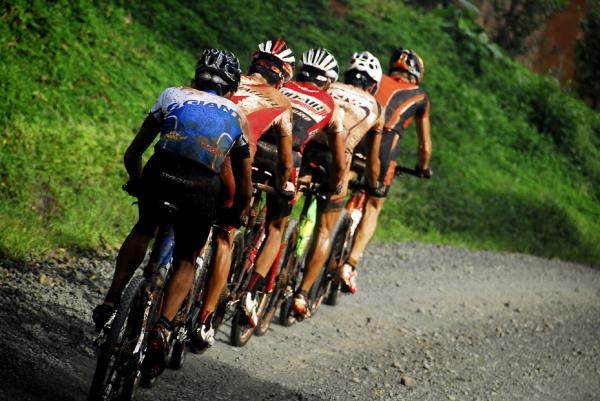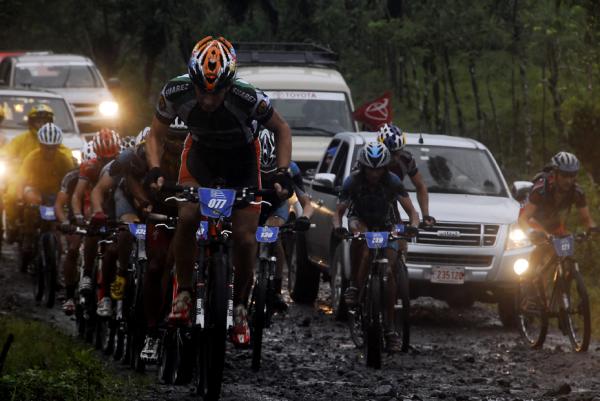La Ruta de Los Conquistadores announces 2010 route
All new stage 2 course revealed




La Ruta de Los Conquistadores organizers revealed the 400km race route, with almost 12,000m of climbing for 2010. The four-day Costa Rican stage race is coming on on November 17-20.
The 2010 course appears to live up to the event's reputation as a challenging stage race with features such as the Irazu volcano, train trestles and the sticky mud of the Carrara National Forest ready to test racers' resolve. What's new for 2010 is a completely re-designed stage 2 course.
Plenty of talented endurance racers are already on the roster for next month's event including Alex Grant, Sam Schultz, Rebecca Rusch and last year’s winner Manuel Prado.
A description of stages follows:
In a four-day stage race with as much dirt, distance and elevation gain as La Ruta offers, no stages count as easy days. However, despite the early wake-up call on day one, the first stage will begin in a relatively civilized manner.
Racers will roll out with a short neutral start from the resort town of Jaco, a favorite of surfers for its waves and culture. The course, through the first checkpoint, will quickly build the confidence of la Ruta rookies, with its gradual climbs, wider trails and good road conditions.
But la Ruta will throw its first punch right after that, guiding racers into Carrara national park and its seemingly countless steep, slippery climbs and descents. The 13km between checkpoints two and three will take racers almost twice as long to cover as the first 25km of the stage. After checkpoint three, with the most difficult sections of the day in the rear view mirror, it will become a race of attrition - 54k and a significant amount of climbing remain to the finish.
Get The Leadout Newsletter
The latest race content, interviews, features, reviews and expert buying guides, direct to your inbox!
Expect a group of the race's elite eight to 10 riders to emerge from Carrara together. But expect no more than three to make the final selection on the day and separate themselves from the rest by the finish. It may not be possible to win the race on the first day, but it can definitely be lost on day one.
It will be a battle of tactics, endurance and intelligence. Racers will have to keep bike, mind and body intact to finish well - the sticky mud, high humidity and over 4500 meters climbing will take their toll on all three. A winning time of approximately six hours is anticipated.
Stage 2: Santana to Tres Rios, 77km (3000m climbing)
Day one will have already shaped the field and delivered fatal blows to the aspirations of several pre-race contenders. Expect that experienced hard men like Manuel Prado and Alex Grant will have made the selection. If newcomer Sam Schultz plays his cards right, he could well be in the mix at this point, too, along with a host of Costa Rican pros that always keep the top international racers honest, besting them many more years than not. With three tough days left to go, it's also likely that we will see a few surprises in the top 10 on GC at this point.
Stage two is a completely new addition to la Ruta. After a couple kilometers to warm up, the trail will point up, gaining 1000 meters in the next 8km - elevation that is almost entirely given back on the following descent, which is significantly steeper than the climb.
The payoff will be a long section characterized by more gradual climbing through a protected forest of pine trees in an area well known for its coffee production. The climate will be much cooler than on day one, and likely windy, setting the stage for riders to play a tactical battle between climbs. The projected winning time is 4.5 hours.
Stage 3: Tres Rios to Turrialba, 85km (2654m climbing)
Of all la Ruta stages, perhaps none will capture the imagination of the racers as much as stage three. The race is half over or more in terms of stages, climbing and time. So there is some sense of relief on the day. But significant challenges will remain.
Climbing from the gun, racers will ride up to the volcano Irazu, and past the volcano Turrialba, with the course topping out at over 3300m after starting at 1250m. Perhaps as much as the climb itself, this means that weather will be a factor on the day. It is not uncommon for racers to be faced with rain, wind and temperatures not far above freezing as they crest the top of the climb and find themselves almost immediately on a rapid, rock-strewn descent to the finish line in Turrialba.
For some each year, a day that starts early with perhaps arm and knee warmers, ends with hypothermia. So while stage three offers racers plenty of reason for optimism (and a great day in the saddle), it remains a stage that demands toughness. It is also a day that offers the most for the pure climbers.
Look for a few riders to make a move up the GC by the time they reach Turrialba. The top riders should not be threatened, but Irazu presents an opportunity for riders to showcase their climbing ability, independent of their ability to shoulder the bike and hike through mud (like day one) or navigate headwinds and pacelines (like day two). Still, it will be no mountain top finish - descending skill is a necessity to make it to the finish line with the leaders.
Even riders with exceptional handling ability can find surprises on the descent, as Jeremiah Bishop, an excellent bike handler, found out a few years ago, landing himself in the hospital after first landing himself on the dirt in an ill-timed mishap. Expect winning times of approximately four hours.
Stage 4: Turrialba to Playa Bonita, 121k (1760m climbing)
The spirits of the field will be noticeably lifted on the final day, much like the last day of any stage race. And while on paper, the dash to Playa Bonita appears the easiest of any la Ruta stage, it will be far from a walk in the park. Many of la Ruta's most fabled features will be concentrated on the last day - the slippery train trestles, sometimes deep river crossings, and seemingly endless kilometers riding on or alongside railroad ties all will test riders' skill and resolve.
Despite a couple solid climbs early on the stage, most of this day will favor powerful riders. The mountain goats that perhaps had rides to celebrate on Turrialba will likely be relegated to anonymity as it relates to stage opportunity on the closing day.
Instead, the GC contenders - already proven tough men and women in a variety of conditions - will be joined by the riders who can make it over early climbs with the bunch, then open the throttle to power over rough, gradual terrain through banana, coffee and sugar plantations as well as several villages and towns.
The finish on the black sand beaches of Playa Bonita serves up a stunning reward for race finishers. Winning times are projected at just under 4.5 hours, and perhaps we'll see a stage win from one of the pre-race favorites that fell out of GC with an early mishap on stage on or two?
The race to Playa Bonita definitely offers opportunity for redemption, and there will no doubt be some highly capable riders looking to end the event on a high note.
Stay tuned to Cyclingnews for full coverage of La Ruta.